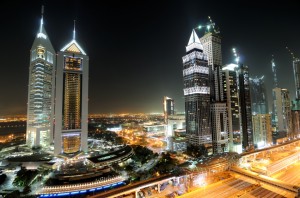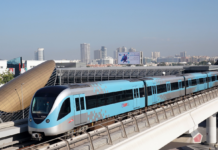By Eugene Harnan www.thenational.ae
Dubai // Properties near Metro stations along the recently opened Red Line, even ones that will not open until next year, are now in bigger demand and commanding higher rents.

Agents are reporting an increase in inquiries about properties along the 52km line, and an increase of 10 per cent or more in rental rates.
“People want to live near Metro stations because the mode of transport is easier and cheaper. However, the price of the apartments has hiked,” said Ginni Banga, a sales and letting agent for Poplar Homes.
She said rents for furnished flats in Dubai Marina were also going up even though the area’s two Metro stations were not yet open.
“Before the Metro launched, a one bed went for Dh100,000 (US$27,000) a year, but it has risen to Dh110,000,” she said. “The landlord is asking for more because the Metro station is nearby.”
Ten stations are open along the Red Line, and the other 19 are expected to open by February.
Sayed Jalil of Ajwa Real Estate said most of the 25 inquiries he receives each day are about properties near the Metro.
Those properties “have increased the rents,” he said. “A two-bed that went for Dh80,000 now goes for Dh95,000 in Dubai Marina.”
Another agent, however, said there the increase in rates had not been significant.
“Nothing substantial or obvious to me, but there has been a little bit of an upside,” said Chris Naamo, a sales and leasing manager for Cubic Real Estate. “We have had about a 10 per cent increase in the number of people asking to live near the Metro.”
A study by the international real estate firm DTZ. released before the Metro opened, predicted a significant jump in the value of property within 400 metres of the stations, especially commercial buildings. But the study cautioned it may take time to feel the full impact, especially since only 10 stations are open.
The report said the potential increase in values near to the Metro stations could be 10 to 20 per cent for both residential and commercial properties, although not necessarily around every station.
Andrew Goodwin, a director at DTZ who worked on the study, said properties near the stations would also hold their value better than properties not serviced by the system.
However, proximity to the Metro would only be a positive factor if the properties were of the same or superior quality as others on the market, he said.
“That is one of the many factors, like quality of finish of the building, the right size and amenities. We see the infrastructure and public transport in any particular location [as a] greater attraction,” Mr Goodwin said.
Previous international studies on the impact of rail networks found that property values increased more than 50 per cent in some cases.
A 1998 study on the Tokaido line in Japan reported an increase of up to 57 per cent in the value of nearby land used for commercial development. “Tokyo has dreadful traffic and the Metro is very good there,” said Richard Toll, a research professor in the Economic and Social Research Institute in Dublin, which carried out a similar study in Ireland.
“Everywhere there have been studies the answer is yes – values rise – but the numbers differ from one place to the next,” he said.
A light rail line was launched in 2004 in Dublin. A study found an increase of seven to 17 per cent in the value of properties between 500 and 2,000 metres from the stations.
“It depends on the quality of the service, but in Dublin or other European cities with lots of congestion, a good light rail link makes a lot of difference,” Mr Toll said.
“What people are paying for is not to drive to work. With congestion problems in Dubai and the city clogged up with cars, then people will be willing to pay a lot money.”
If the Metro runs frequently at a reasonable price, he said, people will use it.
“People really don’t like traffic jams,” he said.
















